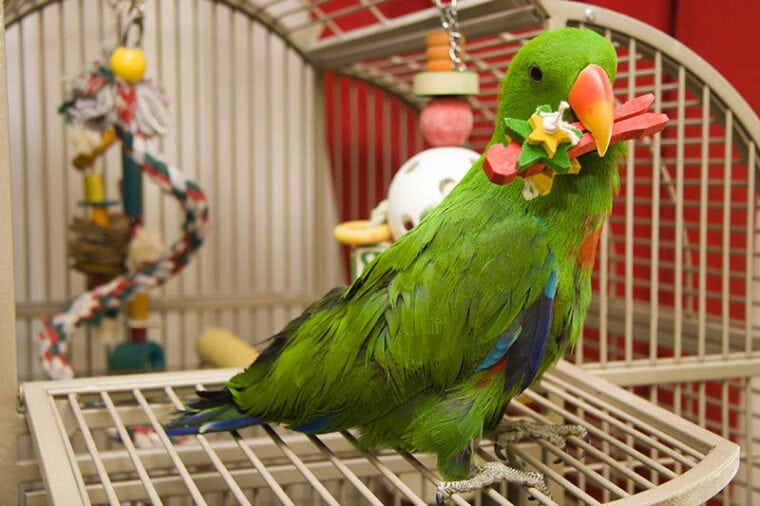
Pet birds are fantastic at hiding when they’re feeling sick. This is a natural response to being prey in the wild. A bird showing symptoms of illness will become a prime target for predators. Even though your bird has a comfy place inside your home, this innate response to conceal unwellness is still coded into its DNA.
An illness could be to blame if your bird is acting out of sorts. There are a few tell-tale signs that something is medically wrong with your bird, so familiarizing yourself with these signs is a necessity. Keep reading to discover how you can recognize the signs of a sick or dying pet bird.
What Makes Pet Birds Ill?
According to VCA Animal Hospitals, improper diet is one of the most common causes of illness in pet birds. Other things that lead to sickness include poor hygiene, trauma, stress, and poor husbandry.
Because birds are excellent at hiding signs of illness, your bird may look completely normal on the outside, but this does not mean it’s healthy. Any deviation from the norm, no matter how small, should be taken seriously as it could signify poor health. You must contact your avian vet immediately upon recognizing signs of illness to give your bird the best chance of survival.
Let’s now take a closer look at some of the symptoms to be on the lookout for.
The 10 Signs That Can Help You Tell If Your Pet Bird is Sick or Dying
1. Puffed Feathers

Sick or dying birds will puff up their feathers. While this is a normal behavior in healthy birds, most will only get puffy if they feel a cool chill or when they wind down for the night. Ruffled feathers can trap warm air, so you may notice your bird looking puffier than usual if the room is drafty as it tries to stay warm. Your bird may also fluff up its feathers if it’s cleaning them.
This is not a behavior that should be exhibited continuously, though. If you notice your bird puffing up and staying puffy for longer than usual, it may be fighting off a fever or infection.
2. Abnormal Feathers
As a bird owner, it’s essential that you check the health of your bird’s feathers consistently. Its feathers can tell you a lot about its overall health and how it’s feeling.
The feathers of a sick or dying bird may have dull coloring or a different structure, texture, or shape than usual. Your bird may be plucking them or displaying signs of feather loss.
A sick or dying bird may not be as keen on keeping up with its usual preening habits, so its feathers can look messy or stuck together.
3. Skin Changes
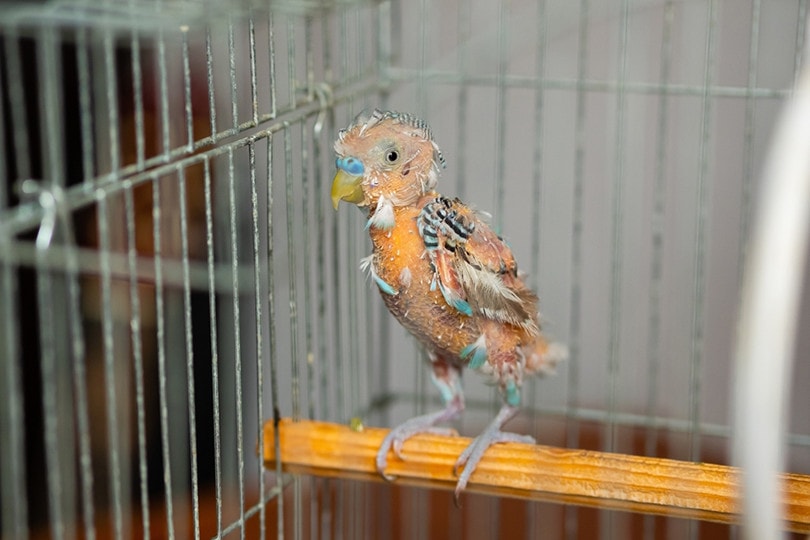
It’s not just the feathers that can feel the effects of a sick or dying bird. Your pet’s skin can also provide insight into its health. It might start looking dry or scaly. There may be flaking, crustiness, or open sores. Your bird might be excessively scratching at its skin, and there may be visible cuts and bruises. If there are any signs of swelling or bulges on the body, it’s a sure sign a visit to the vet is in order.
You may notice cysts or lumps at the base of your bird’s feathers. You probably won’t be able to pinpoint these with a visual inspection, but you’ll be able to feel them as you’re checking your bird over.
4. Neurological Changes
A sick or dying bird can have difficulty staying on its perch. It can start shivering or shaking and may even fall off the perch to the bottom of the cage. Some may seem wobbly or will swoon before falling, while others will start having seizures. If your home is at a normal temperature and your bird is still shaking or shivering, that’s a clear sign that it is feeling unwell.
Other neurological signs include head tilting, unconsciousness, weakness, and even paralysis.
5. Difficulty Breathing
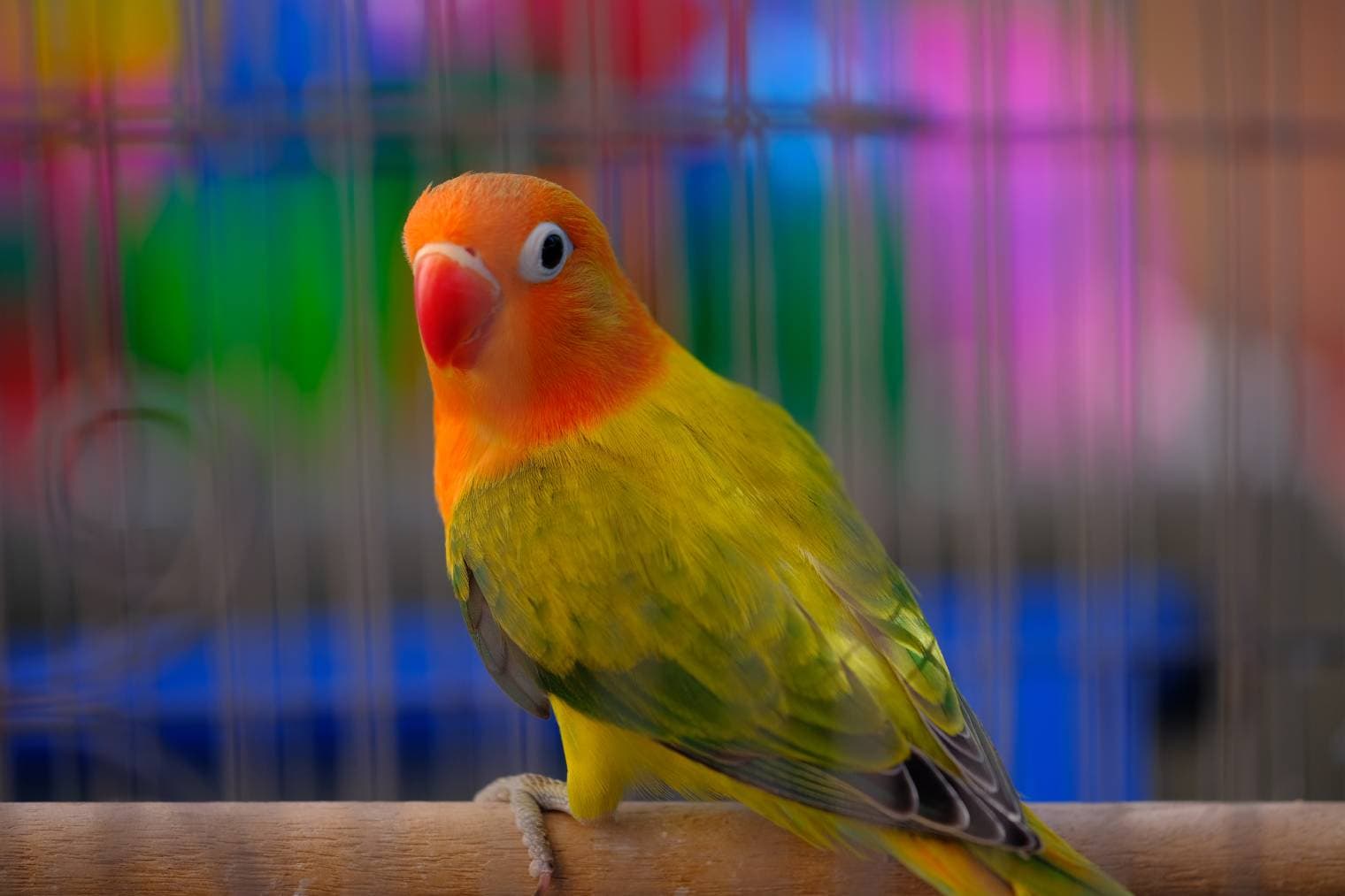
Your bird’s breathing can change if it becomes ill or sick. So when you notice symptoms of breathing difficulty, you’ll want to get your bird checked out as soon as possible, as they can be life-threatening.
Sneezing, labored breathing, and wheezing are not typical sounds your bird should be making during respiration. If you notice your bird making these noises or clicking as it breathes, air sac mites may be present. These parasites get into a bird’s respiratory tract and cause irritation and infections.
Other signs your bird is having difficulty breathing include tail bobbing with each breath, neck stretching out to allow for more air into its air sac, open-mouth breathing, or continuous yawning. Several things can cause breathing issues, but Teflon poisoning and household chemicals are among the most preventable reasons for respiration issues.
6. Reduced Appetite
Birds have a high metabolism, so you must ensure your pet gets the nutrition it needs daily. If you notice your bird isn’t eating as usual or see signs of weight loss, it could be a sign that it has an impaction or intestinal blockage. Refusing to eat or weight loss can mean death is near for your bird.
You can tell if your bird is losing weight by feeling its breast area. If you can feel the bone, your bird is underweight. You might also consider regularly weighing your bird to keep tabs on its weight.
It can be challenging to tell if your bird is eating as it should be as they often pretend to eat when they’re not. You may notice that their food bowls are emptied, so you think they’re eating. But in reality, they’re picking pellets or seeds from their bowls and dropping them to the bottom of their cage. Make it a regular habit to check the cage bottom for discarded food.
7. Changes in Drinking Habits
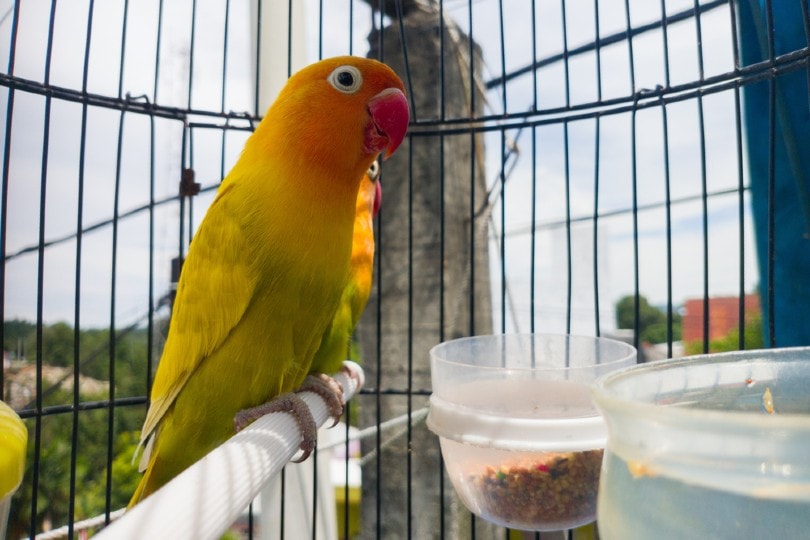
If your bird starts to drink much more than usual, it may be developing a condition like diabetes or dealing with liver problems. On the flip side, if it’s drinking too little, can be an indicator of a serious illness. This is especially true if stark changes in appetite accompany the reduced fluid intake.
8. Behavioral Changes
Your bird might be sick or dying if it starts exhibiting behaviors far outside the norm. For example, if your pet is usually pretty friendly and is now suddenly easily irritable and resorting to biting, there may be an illness at play. Similarly, if your typically high-strung bird is suddenly unusually tame, problems could be afoot.
If your usually vocal bird stops singing or imitating sounds it hears in its environment, a serious health issue could be the cause. You might also recognize a change in the tone of your bird’s vocalizations. If this is the case, monitor it for additional symptoms over the next several days.
9. Lethargy
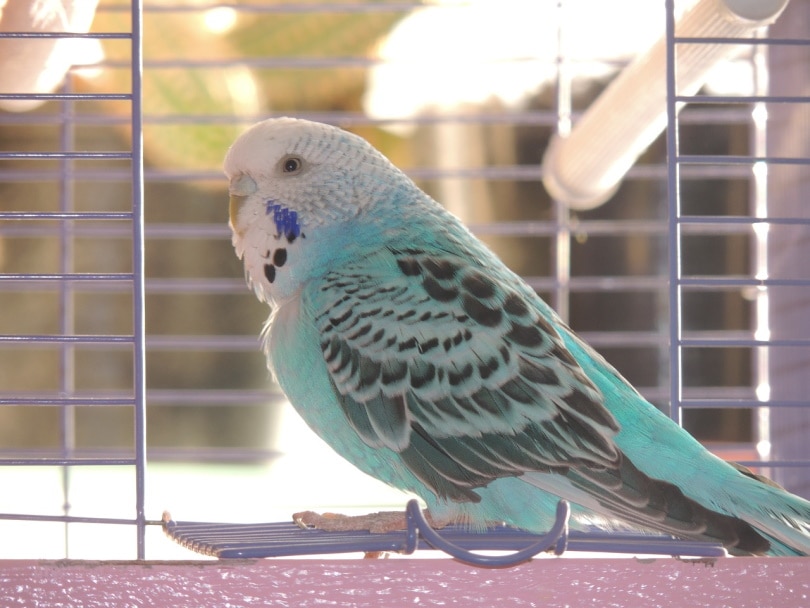
A sick and dying bird will start slowing its movement and may even sit in its cage very still with its eyes closed. A bird that never cared for being picked up may allow you to handle it as it’s too weak to move away. It might also sit on the bottom of its cage instead of its usual perch.
Sometimes ill birds will hang off the side of their cage by the beak rather than using a perch.
10. Changes in Feces and Urine
Your bird’s feces is an excellent indicator of its overall health, so we recommend familiarizing yourself with what your pet’s droppings usually look like. Any changes to its urine or feces can indicate an illness.
Dark red or black feces can indicate that there is blood present. This can be a sign of conditions like cancer.
If food is clearly visible in the feces, your bird is not digesting its food as it should be. This could indicate a gastrointestinal disease or egg binding if your pet is female.
Watery feces can indicate a fungal or bacterial infection.
A bird’s urine is not yellow like other domestic animals. Instead, it presents as a white and chalky substance known as urates. If you don’t see any urates in your bird’s droppings or if they’re yellow or lime in color, there could be a problem afoot.
- See also: Molting in Pet Birds: Signs & Care Guide
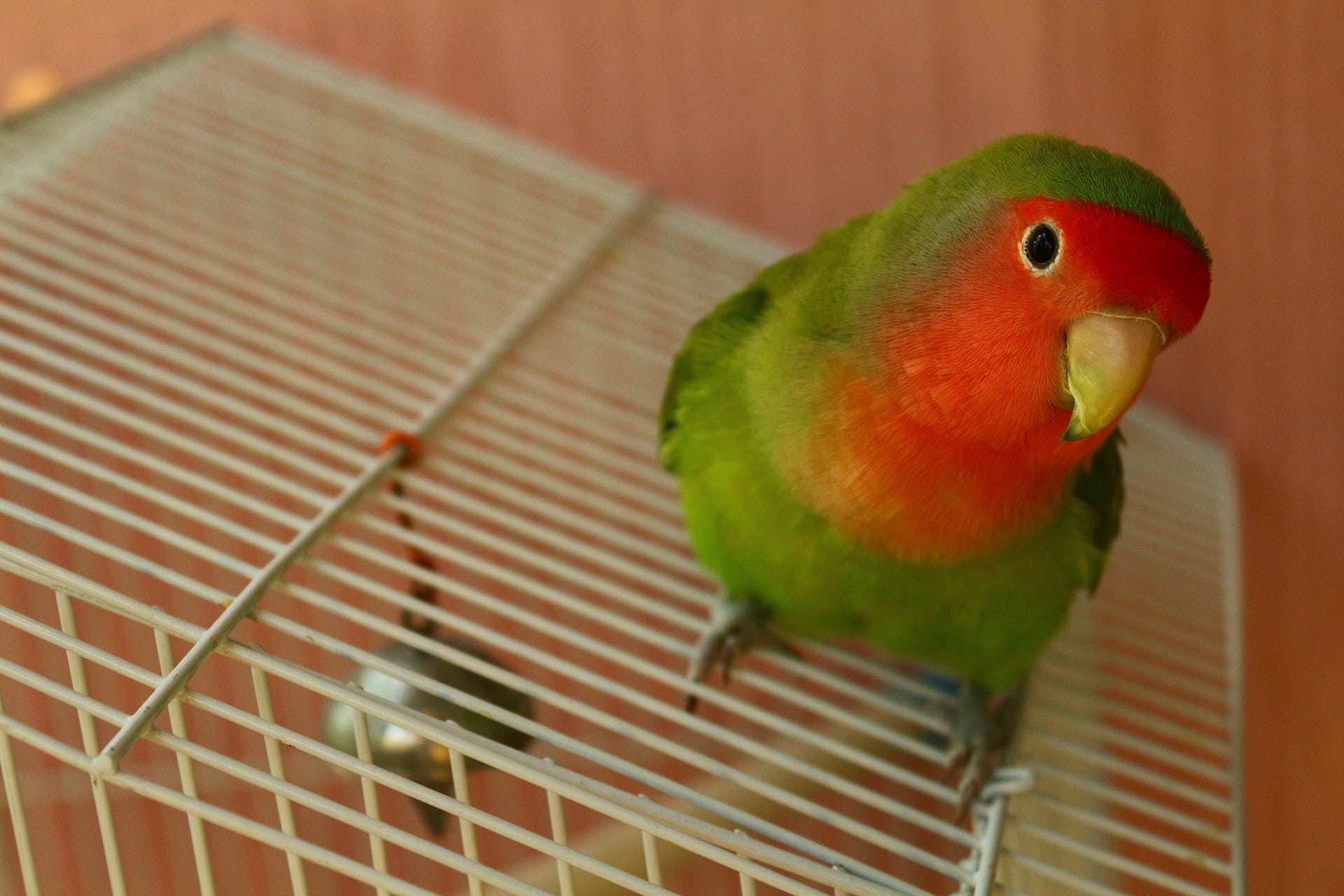
 Conclusion
Conclusion
You can’t notice symptoms of illness or impending death if you don’t make a habit out of regularly monitoring your bird. Once you have a baseline for how your bird typically acts, recognizing sickness symptoms will be much easier. Ensure you’re watching your pet’s food and water intake, looking at its feces and urates, and observing its behavior daily. Remember, your pet relies on you to provide the things it needs to thrive, so do your due diligence by keeping tabs on your feathered friend.
Featured Image Credit: Jill Lang, Shutterstock








